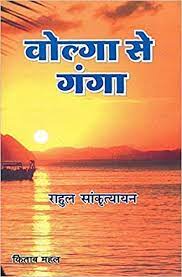Top 10 Best Novel In Hindi By Renowned Indian Authors You Must Read
A novel is a long narrative work of prose fiction which describes intimate human experiences . Similarly as exercise helps your body stay better more, reading is an activity that helps keep your mind fit. At the point when you read a novel, you make the plots, subjects of your own. You put your characters in it according to reference in the book. It assists you with improving your brain power for perceiving and remembering. Here is a list of Top 10 best novel in hindi by renowned Indian authors you must read.
By reading novels you will become acquainted with various stories, individuals, qualities, ethics and they are a fabulous method to get away from your own life when it is exhausting, disturbing, disappointing, terrifying, dull. Prose style and length, just as fictional or semi-fictional subject matters, are the most clear defining characterizing attributes of a novel. In contrast to works of epic poetry, it tells its story using prose rather than verse; unlike short stories, it tells a lengthy narrative rather than a brief selection.
List of Best Novel in Hindi by Renowned Indian Authors You Must Read
| Best Novel in Hindi by Renowned Indian Authors | Links |
|---|---|
| 1. Godaan | Check Now |
| 2. Gunaho Ka Devta | Check Now |
| 3. Maila Aanchal | Check Now |
| 4. Nirmala | Check Now |
| 5. Kashi Ka Assi | Check Now |
| 6. Forge your Future | Check Now |
| 7. Kitne Pakistan | Check Now |
| 8. Autobiography Of A Yogi | Check Now |
| 9. Rag Darbari | Check Now |
| 10. Volga Se Ganga | Check Now |
1. Godaan
Godaan is the best novel by Premchand. If we talk about Hindi language, it seems incomplete without Premchand’s novel. This novel was published in the year 1936. Godaan is the living epic of India’s rural life and agricultural culture. In this, in a very simple and interesting way, Gandhism, Marxism and Progressivism have been depicted in full perspective.
Godaan, meaning “gift of a cow”, is a novel that takes you through a beautiful love-hate relationship. The story revolves around several characters representing different sections of the Indian community. The main character is Hari. Like many other poor farmers, Hari aspires to own a cow in the hope of raising his social social status to some height of self-sufficiency. Contrary to his circumstances, he bought a cow on loan. This damage leads to a big fight between Dhani (Hari’s wife) and Heera’s wife. Heera poisoned the cow and the police ran to avoid being caught. To settle the case of cow’s death, Hari takes some loan from a sage and bribes the police. On the other hand, Gobar (Hari’s son) has an affair with a widow Jhunia. When Jhunia becomes pregnant with her child, the dung moves to the city to escape the wrath of the villagers. But then Jhuya is taken into the care of Hari and his family. Due to Jhunia’s issue, the gram panchayat ordered Hari to pay the fine amount for his son’s deeds. Thus, Hari again takes a loan from the borrowers. As the debt grows on his head, Hari’s work works beyond his ability to stop and eventually dies. His sons lead a sedentary life in the dung town but can never earn enough to pay their father’s debts. Godan is one of the major hit novels of Munshi Premchand. Apart from Hari and Gobar, the novel consists of several subsections.
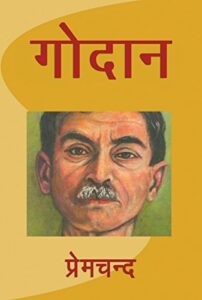
2. Gunaho Ka Devta
Gunahon Ka Devta is one of the early and most read novels of Hindi novelist Dharamvir Bharti. It is the ultimate depiction of the latent and supernatural form of love. More than one hundred editions of this novel have been published including Sajid and Ajild. It is counted among the best novels of Hindi in terms of characterization of characters.
The place of this story has been Allahabad of British times. There are three main characters in the story: Chander, Sudha and Pammi. The whole story mainly revolves around these characters. Chander is one of the dear students of Sudha’s father i.e. university professor and the professor also considers him like a son. That’s why Chander keeps on visiting Sudha’s here without any hindrance. Both of them do not know when Sudha starts giving heart slowly. But this was no ordinary love. It was a love based on devotion. Chandra was Sudha’s deity and Sudha always respected her as a devotee. Chander is in love with Sudha, but Sudha’s father’s favor to her and his ideals overwhelming personality weaves such a tangle that he can never speak his mind to Sudha even if he wants to. In Sudha’s eyes, he wants to remain a deity and this is what happens. His relation to Sudha is the same as that of a deity and a devotee. Chander’s conflict with love persists for much of the novel. The result is that Sudha gets married elsewhere and eventually has to leave the world.

3. Maila Aanchal
Publication of the famous novel Maila Aanchal in 1954. In addition to fiction, memories, sketches and reportage were also written in genres. Maila Aanchal is the representative novel of Phanishwarnath ‘Renu’. This is the best and powerful regional novel of Hindi. Setting the background of a backward rural area in north-eastern Bihar bordering Nepal, Renu has given a vivid and vivid depiction of the life there, to which she herself was intimately connected.
According to Renu, it has flowers, colic, dust, roses and mud. I could not escape from anyone. It depicts poverty, disease, hunger, poverty, adultery, exploitation, extravagance, superstitions etc. From the point of view of craft, it merges one after the other incidents like in the film. And the second one starts. It has incidentality but no central character or story. It uses dramatization and storytelling style. It is also credited with the promotion of regional novels in Hindi. In this epoch-making novel work of storyteller Phanishwarnath Renu, there is a unique harmony of storytelling as well as language craft and style craft, which is as natural as it is, it is equally effective and seductive.

4. Nirmala
Nirmala is a famous Hindi novel written by Munshi Premchand. It was published in the year 1927. The writing of this novel started in 1926 on the basis of dowry system and mismatched marriage. This novel was published in different installments from November 1925 to December 1926 in ‘Chand’, a women’s magazine published from Allahabad.
This novel has a special place in the history of women-centred literature. The central and main character of this novel’s story is a 15-year-old beautiful and gentle girl named ‘Nirmala’. Nirmala is married off to a middle-aged man. He has three sons from his ex-wife. Nirmala’s character is pure, but still she has to be a victim of disrespect and disregard in the society. Her husband’s devotion does not work. He is suspected, his circumstances make him guilty. In this way Nirmala attains death while battling adversity.
Nirmala has a sad and touching story of mismatched marriage and dowry system. The goal of the novel is to mark the ill effects of mismatch-marriage and dowry system. Through Nirmala, the pathetic condition of the middle-class girls of India has been depicted. Nirmala’s death at the end of the novel poses a great challenge to eradicate this evil social practice. Premchand has created humor in the novel by the context of Bhalchand and Moteram Shastri.
Unrelated incidents have been completely boycotted while constructing the story building around Nirmala. This has made this novel more well-organized and well-organized than Sewa Sadan. It can be called the first ‘realistic’ of Premchand and the first ‘psychological novel’ of Hindi. One of the features of Nirmala is that the omission of ‘Preacher Premchand’ has made it not only artistic, but has also become a development mark of Premchand’s craft.
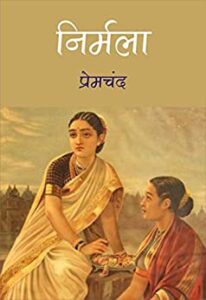
5. Kashi Ka Assi
Kashi Ka Assi is a 2004 Hindi novel written by Kashi Nath Singh. The story goes through the events of 1990 and 1998 including the Ram Janmabhoomi movement and the implementation of the Mandal Commission. Kashi Ka Assi is the new novel of Kashinath Singh, the famous storyteller of stories and memoirs. A different kind of novel full of life and vitality. Question mark in front of the traditional accepted structures of the novel. For the last ten years, ‘Assi’ has been the identity of Kashinath and also of Banaras. When some parts of this novel were published in magazines under the name ‘Katha Reportage’, there was a stir among the readers and writers. In small towns and cities, for special points such as robbery, photostats, the characters themselves made a ruckus and made threats ranging from beatings to court threats. Now that complete novel is in front of you in which there are five stories and the center of all those stories is also eighty. The same place in every story, the characters also with their real and real names, with their speech and tone. The bold and stoic comments of these characters on every national and international issue are reminiscent of the indigenous and folk tradition of Kashi whose heirs were Kabir and Bhartendu . The language of the novel is its life-depression and satire – drenched in humour. The ‘sweet beautiful very beautiful’ voice of literature may be seen somewhere. All in all, ‘Assi’ in the eyes of Kashinath is just a grain of rice to identify the politico-cultural khichdi that has been cooking in Indian society for the last ten years, that’s all.
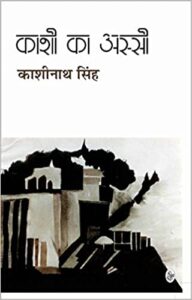
6. Forge your Future
This is the best Motivational Novel written by APJ Abdul Kalam, dear to all of us. In which Kalam sahib has told very good things for today’s children and young generation based on his experiences. Knowing who gets inspiration and feels like doing something big in life. Every book by Kalam sahib has been my favorite and it is truly a life changing book. Dr. A.P.J. Abdul Kalam was an Indian scientist and politician who played a leading role in the development of India’s missile and nuclear weapons programs.
Excellent inspirational book. The book contains thirty two queries of today’s youth and therefore the queries who’s answer each youth desires. I had ne’er show some queries or expected by youths that is describe during this books and that they square measure very good. The books can assist you plenty to seek out answers that you would like and assist you in your life to realize your goals and the way to become sturdy in tufa times of your life. Go for it. you may notice it terribly useful.
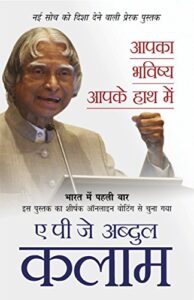
7. Kitne Pakistan
Kitne Pakistan is a novel written by the famous Hindi litterateur Kamleshwar, for which he was awarded the Sahitya Akademi Award in 2003. The novel is based on the partition of India-Pakistan and Hindu-Muslim relations. In the last century, the two major events that changed the direction of the people of India and the whole of its history was the independence of India from the British rule and the division of the land of this country into two pieces named India and Pakistan.
Both these events changed the life of the entire continent. The impression of that accident can be seen on the art-literature-culture till today. Like today, even after years of the end of the Nazis, even after the change of governments and the establishment of democracy, Germany could not recover from the ravages of Nazism and in every work the shadow of that great destruction is seen in some form or the other. It is, in the same way, the stench of that accident and destruction of the nineteenth century is still present around us. Blood splatters are still visible on the pages of the books.
How much has been written on the partition of India and Pakistan, how many pages have been painted, but it is sad that it is not less. Many works have been composed in Hindi on the basis of this subject.
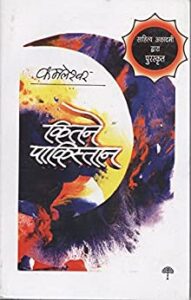
8. Autobiography Of A Yogi
One of the Top 100 Spiritual Books of the Twentieth Century. Sri Paramahansa Yogananda ji is known to be one of the highest ranking yogis of India. He was a scholar as well as a yogi. He introduced the world to Kriya Yoga, the mode of yoga. Paramhans ji has tried to give his life-long knowledge and glimpses of the life of those sages and saints through this book to his followers. This autobiography is considered one of the best books written on spirituality. His first-hand account of his life experiences includes childhood revelations, stories of his visits to saints and masters in India, and long-secret teachings of Self-realization that he made available to the Western reader. This book was originally written in English which was later translated into many languages including Hindi.

9. Rag Darbari
Raag Darbari is a famous satirical work by noted Hindi litterateur Srilal Shukla, for which he was awarded the Sahitya Akademi Award in 1969. It is a novel that exposes the valuelessness of modern Indian life with ease and ruthlessness through the story of the village. This is probably the first major Hindi novel written from beginning to end with so much sarcasm and purposeful satire.
The writing of ‘Raag Darbari’ began in late 1964 and ended in its final form in 1967. It was published in 1968 and in 1969 Srilal Shukla received the Sahitya Akademi Award for it. As a Doordarshan-serial in 1986, it received appreciation from millions of viewers.
In this, Shrilal Shukla ji has exposed layer after layer the valuelessness of rural life of post-independence India. In this context, Gopal Rai writes that- “Rag Darbari is the story of Shivpal Ganj, a township village in Purvanchal of Uttar Pradesh; The document of the life of that village, which has been dragging after independence, despite village development and attractive slogans of ‘Garibi Hatao’. Despite all the slogans of progress and development, the life of the country is dragging in the face of the blows of vested interests and many undesirable elements. Vaidyaji, the founder of the Panchayat of Shivpalganj, the management committee of the college and the cooperative society, is the political culture which is in the name of democracy and public interest. But fruit is blooming all around us.

10. Volga Se Ganga
The book Volga to Ganga is counted among the wonderful works of Hindi literature. This is a wonderful book which contains stories in itself as well as the history of the last 8000 years of the Aryans. In this, the stories start from 6000 BC and go on till 1942. There are 20 different stories for each time block. Which takes place in different regions. The stories sequence the development of the Aryan society. The stories of the book are mainly inspired by the mother power, religious rituals, the evils present in the society and the life and struggle of the common citizens of that time. This book covers the history of Aryans starting from Northern Europe through story and reaching Central Europe, Central Asia and India and the expansion of Aryans. To write these stories, the author has taken the help of ancient books and folk tales prevalent in many countries.
